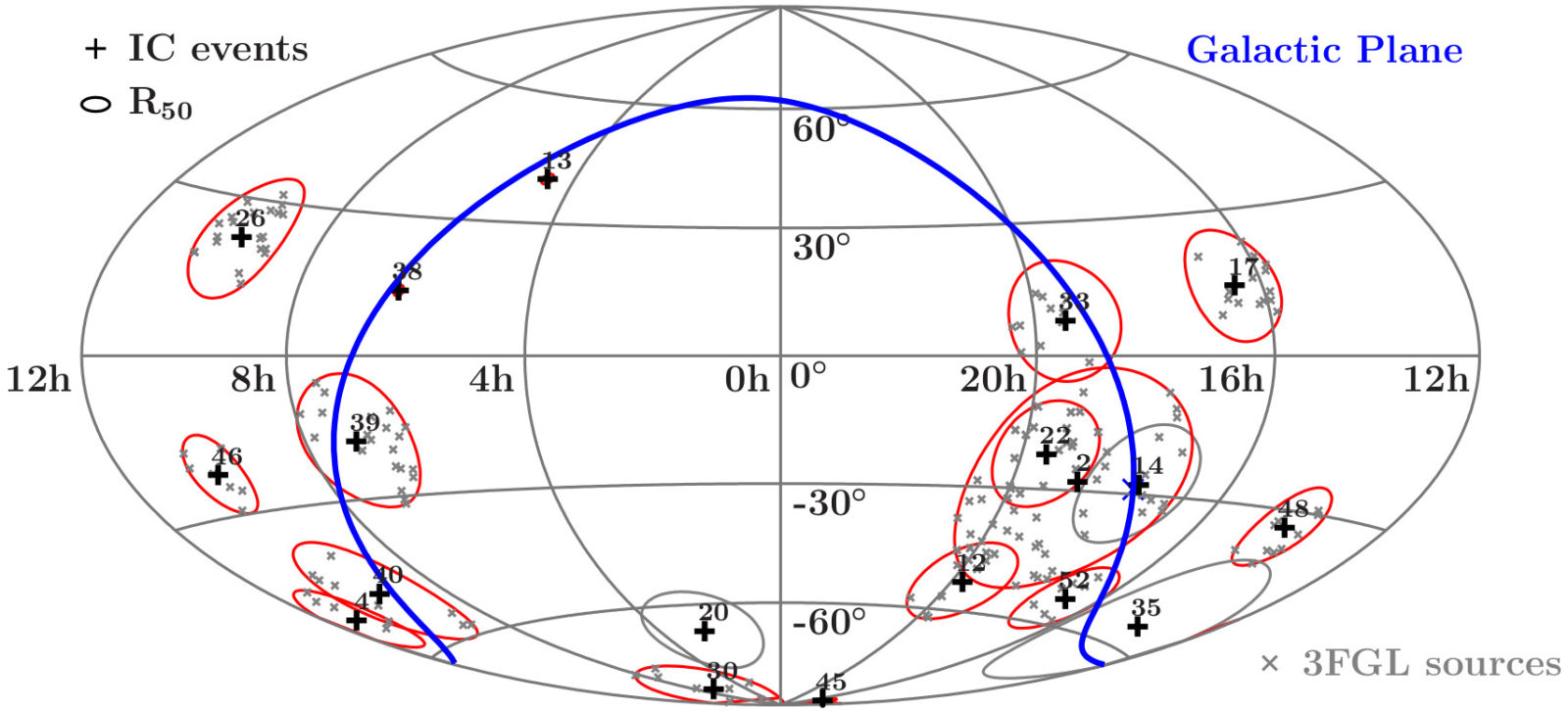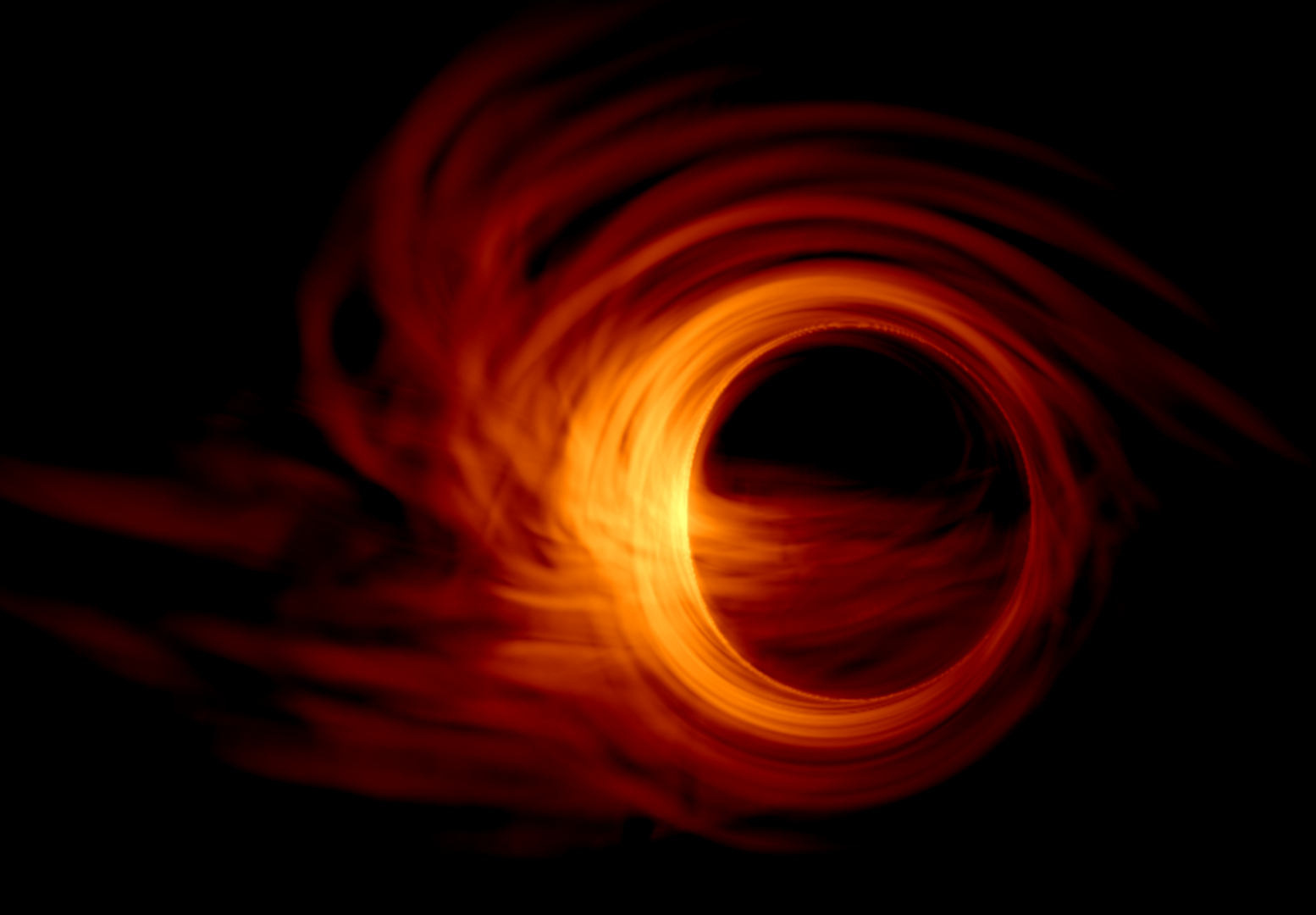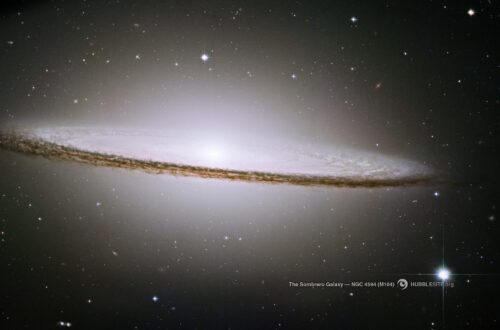Supermassive black holes are powerful engines. A black hole with the mass of a million-10 billion times the mass of the Sun is fueled by gas surrounding it. A small fraction of these systems accelerate particles in a collimated outflow of plasma, called jet.
Many questions about AGN jets remain unanswered: How are those jets launched? Which particles are accelerated in a jet?
We know that electrons (and positrons) are in a jet, as we see linearly polarized synchrotron emission from these jets in the radio-X-ray wavelengths. Electrons in the magnetic field of the jet gyrate and produce the light we see. However, it is not clear whether protons are accelerated in jets as well, and if yes to which energies. We are curious about this question as we observe a flux of protons (and heavier nuclei) at Earth. These “cosmic rays” have often been accelerated to high and very-high energies (exceeding the energy of the protons at the LHC by a factor of a million). Black holes and their jets are ideal sites of accelerations, as we see very high-energy photons from jets (up to TeV energies). I study blazars, sources where the jets points at Earth, so ideally the emission from the jets is seen from Earth.
Luckily, there is another particle we can track: Neutrinos. If there are protons in the jets of AGN, they wlll interact with photons and produce neutrinos (amongst other particles). Unfortunately, neutrino are hard to detect, as they often easily travel through the Earth unhindered. If they are detected the directional reconstruction often has a large positional uncertainty.
Previously, I studied blazars as counterparts for neutrinos above 1 PeV, and blazar flares in coincidence with neutrino events. In my recent work, I study the possible blazar counterparts of IceCube High Energy Starting Events (HESE) above 100 TeV. I used the jetted AGN from the 3LAC catalog. I find 179 3LAC sources that are consistent with the 16 HESE events above 100 TeV and below 1 PeV (see figure below).

For all sources I compile the high-energy SEDs (see figure below), and calculate expected number of neutrinos. First I calculate the maximum number of neutrinos by assuming that all of the high-energy emission originates from the hadronic scenario. We show that there is no correlation between expected number of neutrinos and the gamma-ray flux.

The total number of neutrinos would then be 493 neutrinos for these sources. This does not take into account the full sky. We observed 16 neutrinos between 100 TeV and 1 PeV in the given time frame, over the whole sky. Assuming that the 179 sources from the 3LAC are representative of all blazars, we can scale this expectation to the full sky. This yields N=3634 neutrinos. When we use a realistic (powerlaw) neutrino spectrum this number is reduced to N=712. If we further take into account that we expect high-power blazars to be the dominant sources of neutrinos, and the difference in effective area to the neutrino flavors, we obtain N=178. This exceeds the amount we observed. And out of the 16 observed HESE events we expect 14 cosmic neutrinos.
These numbers show that even if only ~8% of the high-energy emission is of hadronic origin blazars can explain all HESE events. This does not take into account unresolved blazars. This would lower the number to ~4%. These results are in agreement with previous work that show that the source TXS 0506+056 does not have a strong hadronic component in the spectrum.
While it is unclear whether all blazars are equally “hadronic” (which fraction of their high-energy emission stems from hadronic interactions), this suggests that the non-detection of bright blazars is not in conflict with the observed neutrinos. Blazars do not have to be very hadronic to explain the neutrino events, which means the individual expected neutrino numbers are still very low.
While the blazar-neutrino connection has not been proven conclusively yet, we are on our way to solve a decade old question: which sources produce high and very-high energy cosmic rays?



